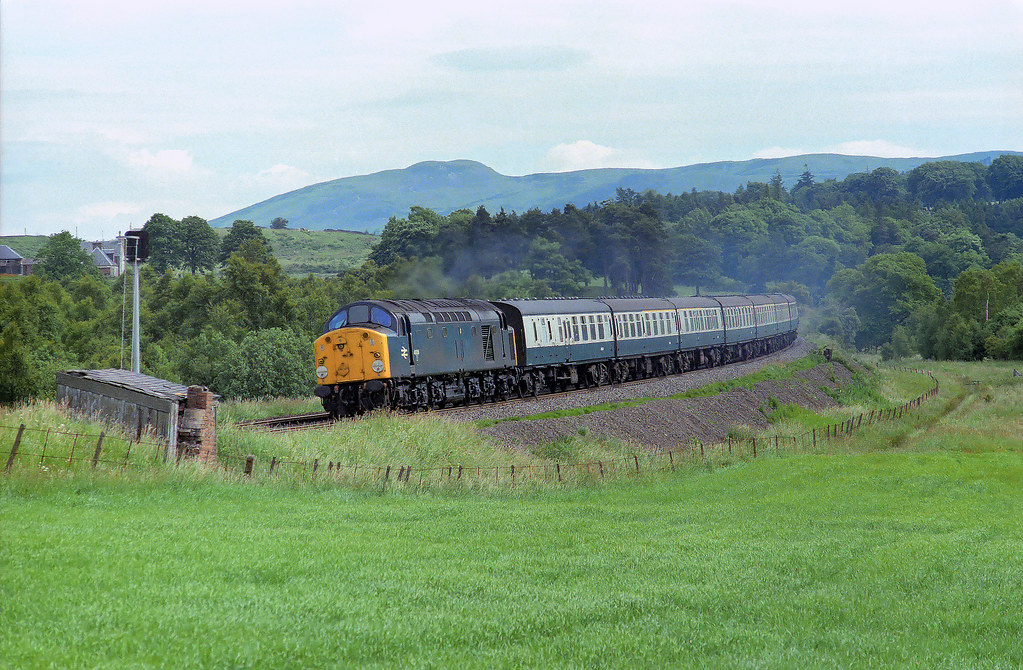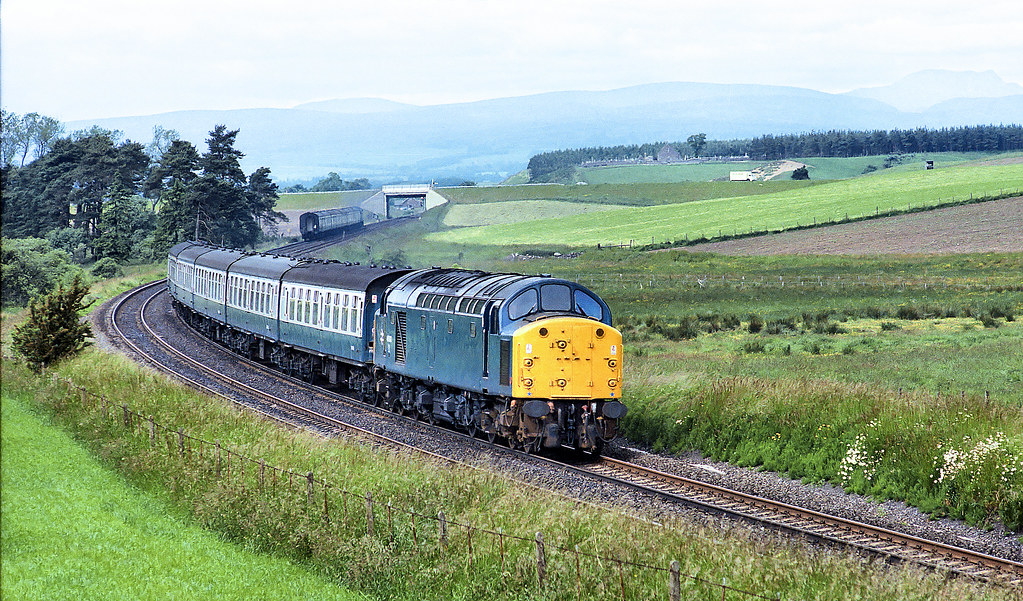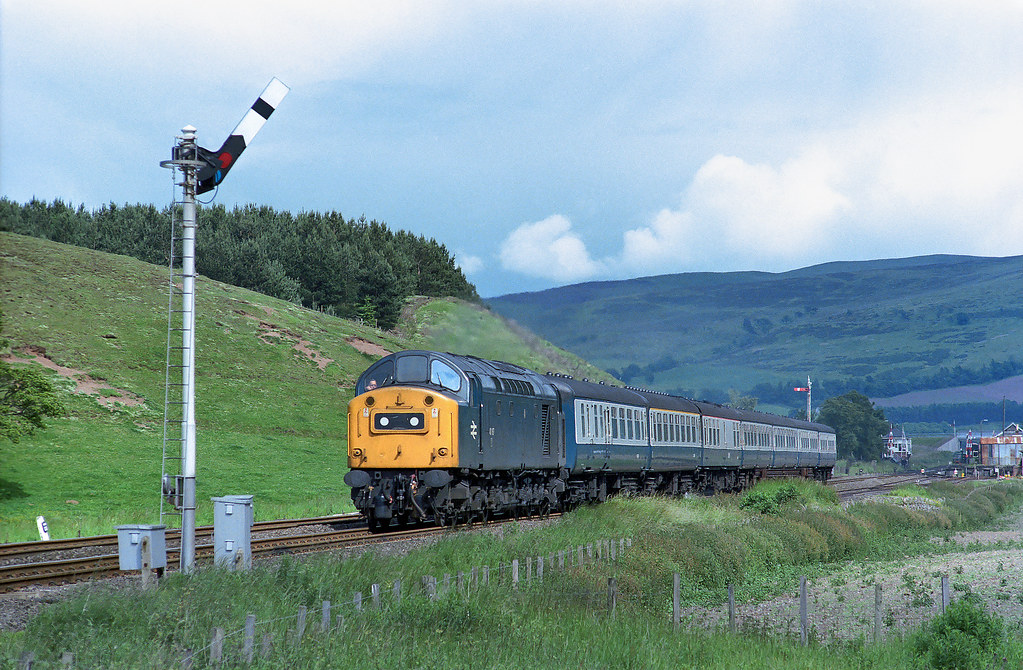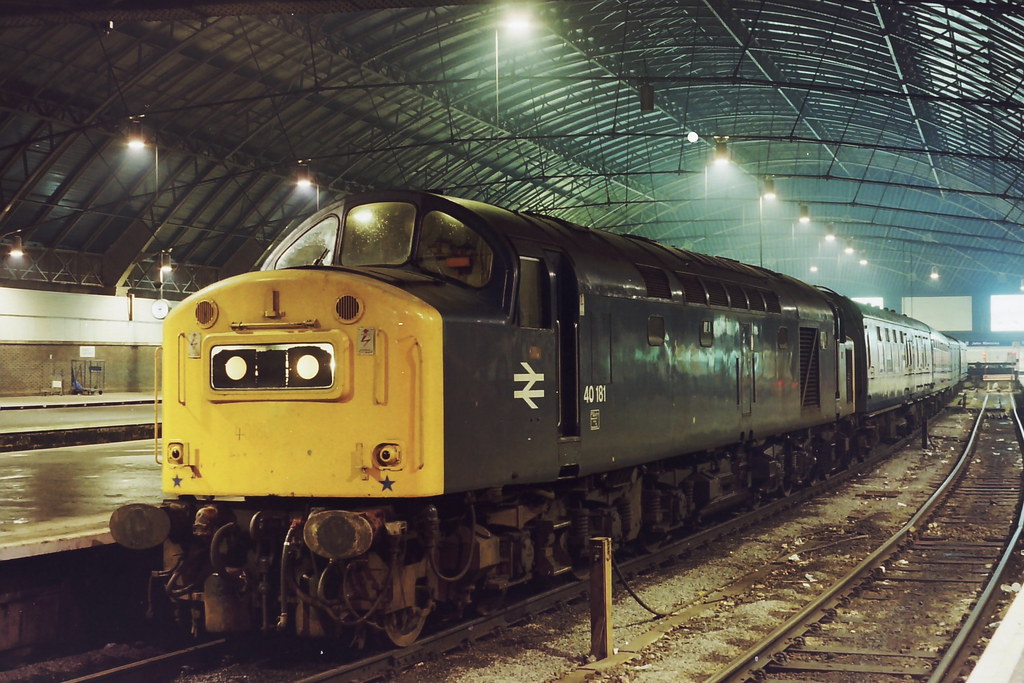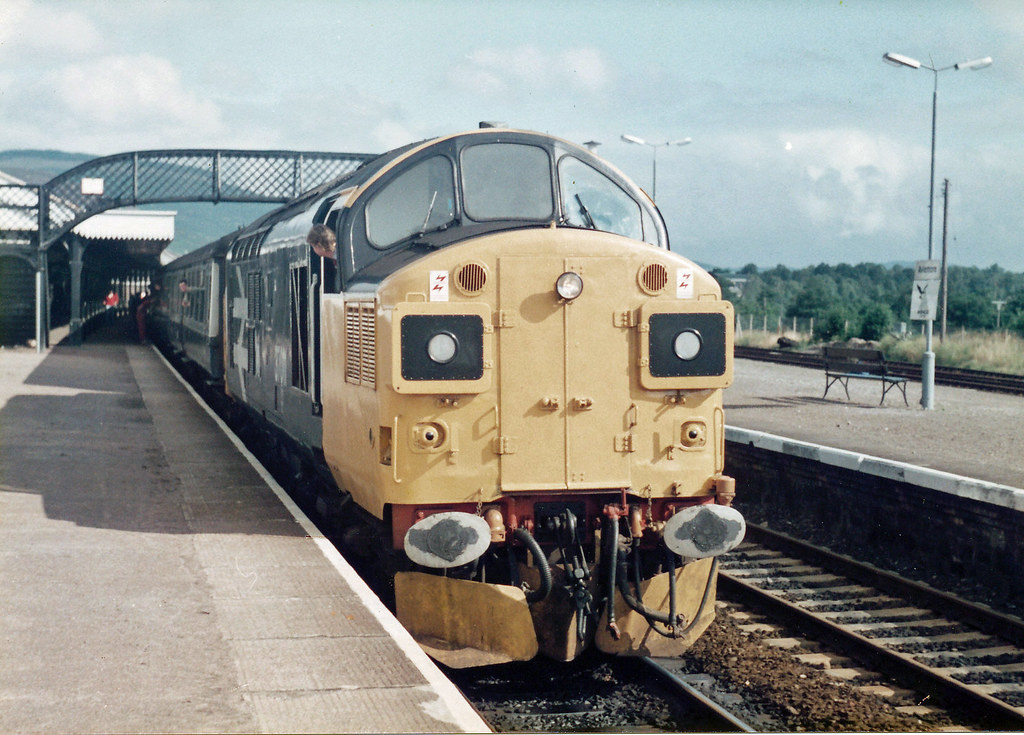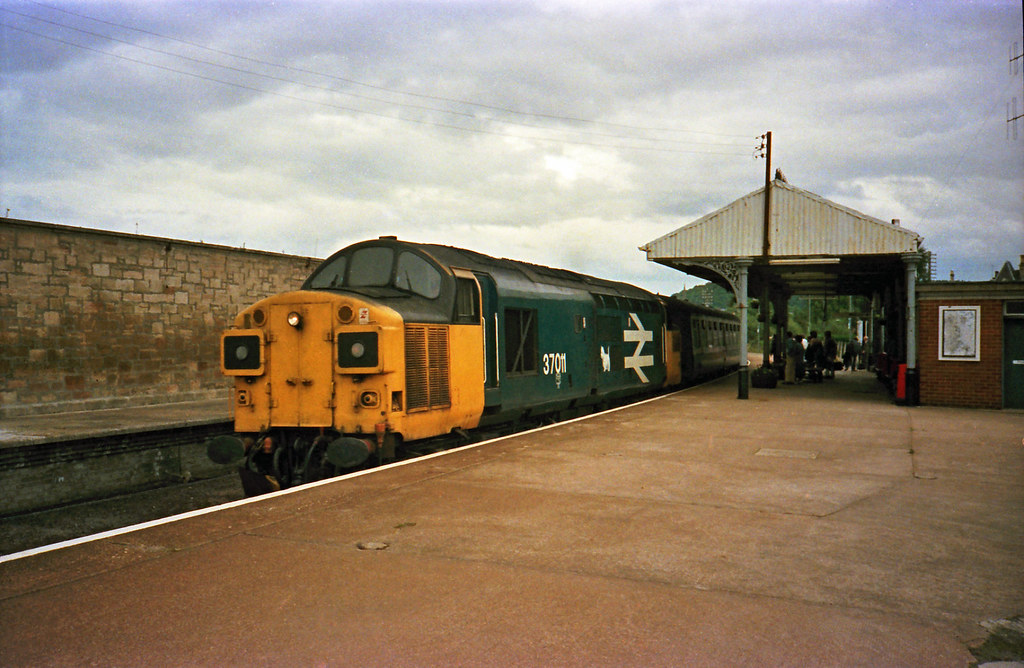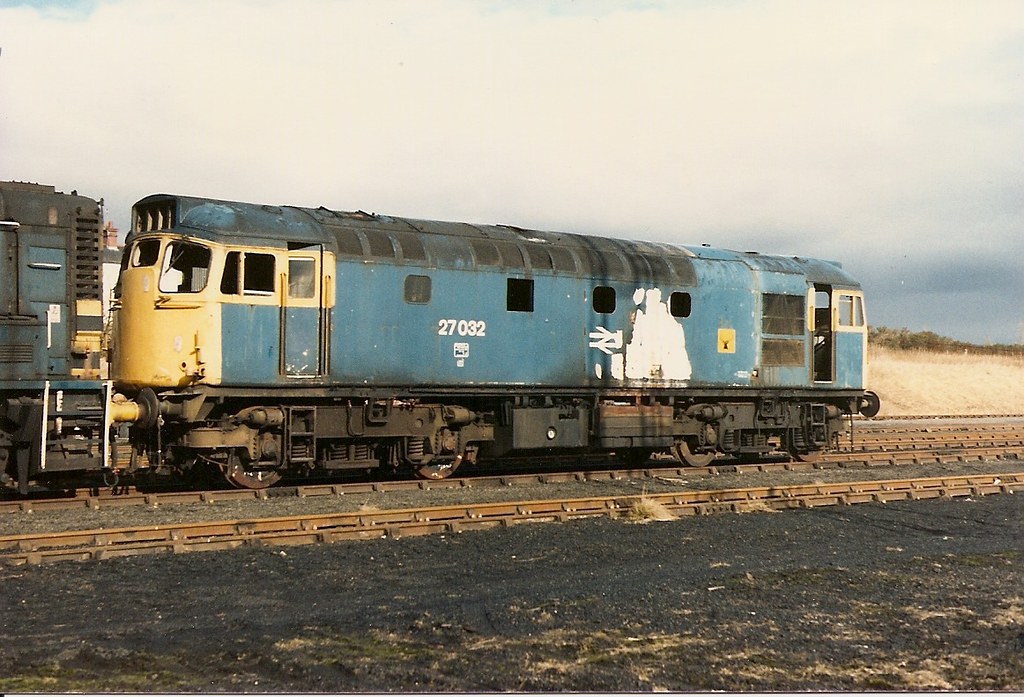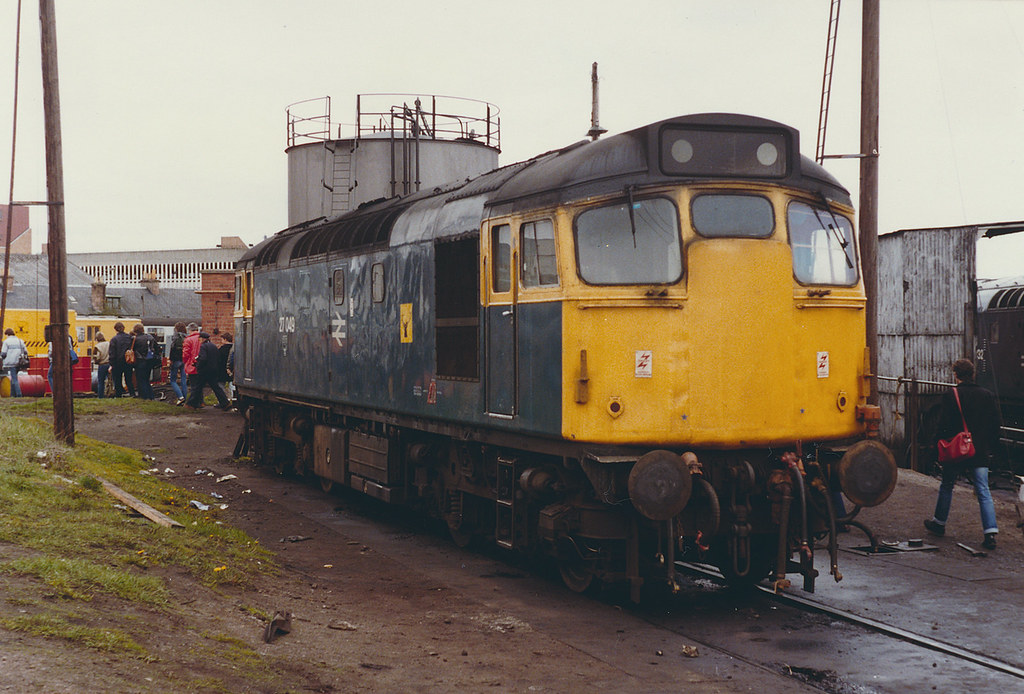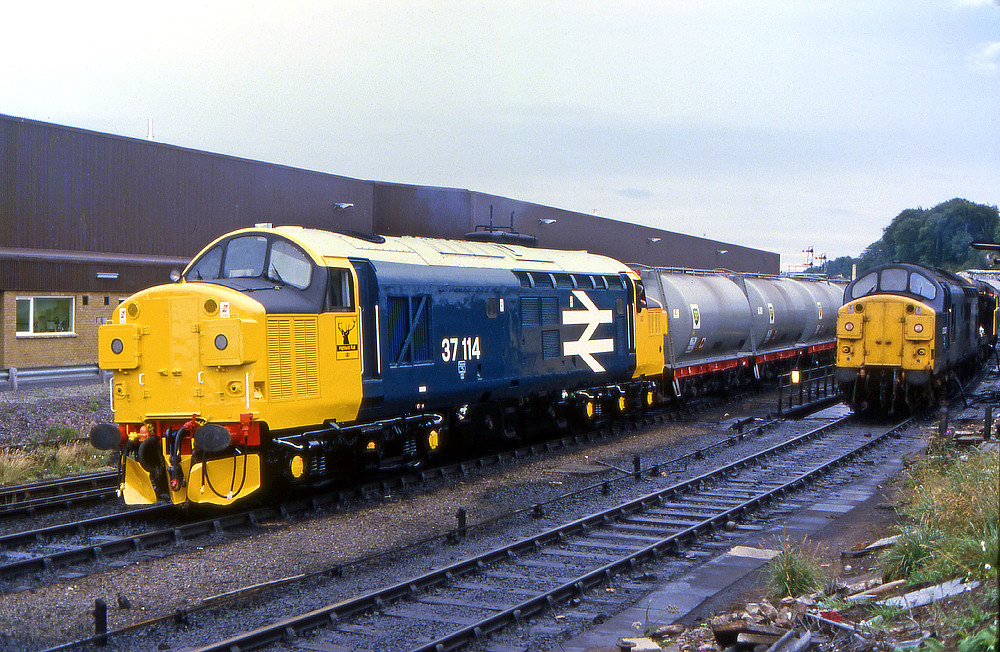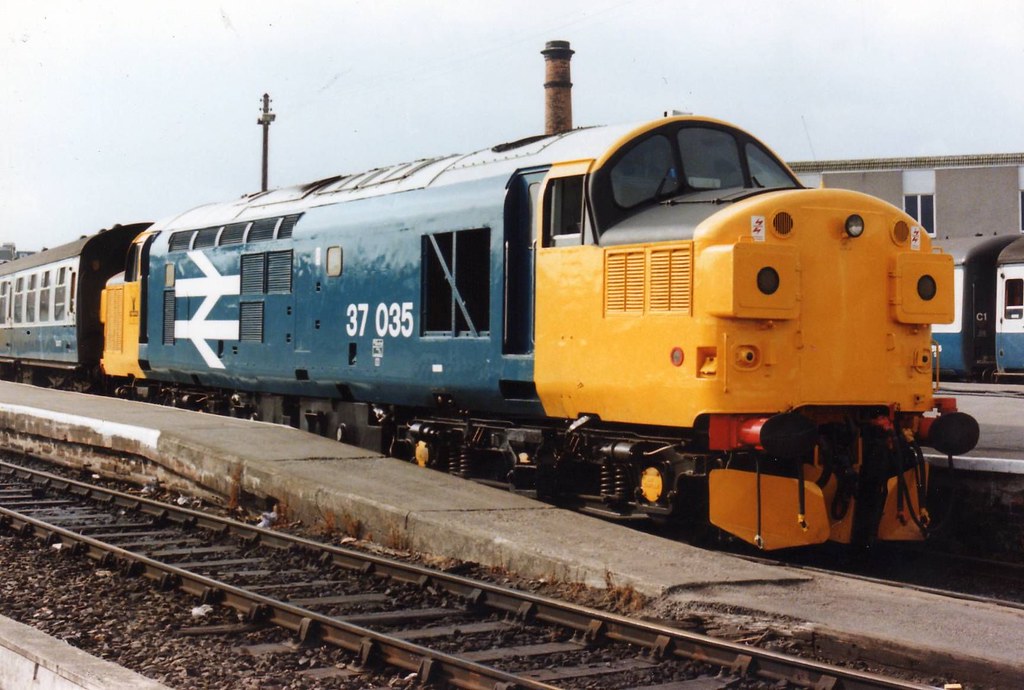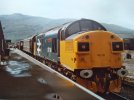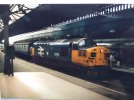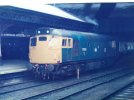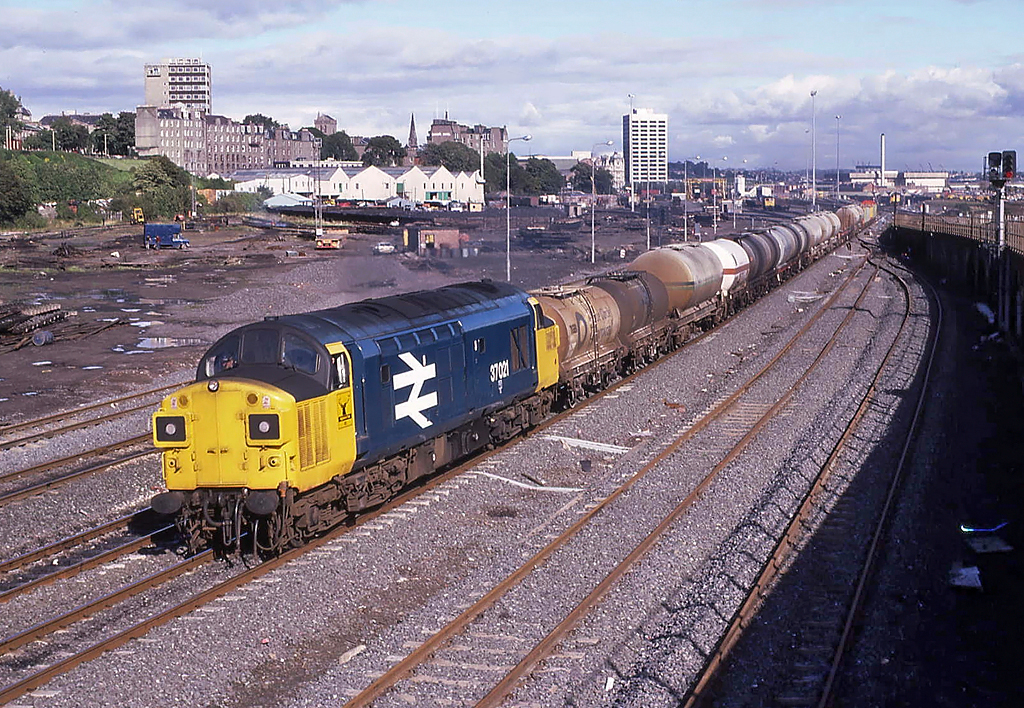37025 and 37114 are your main candidates. They were at Inverness through the period of steam heat class 37s on the Far North and Kyle lines.
But 37114 is tricky because it had various other embellishments at various times such as a grey roof and red buffer beams. It appears to have been the Inverness favourite for special duties.
Ex works, well ex depot. Having come out of Inverness depots paint shop that morning. Shunts fuel tanks round the depot on the 31st July 1984

www.flickr.com
37035 was also at Inverness but had plated over gangway doors and yellow headcodes.
Explore duff876's 182546 photos on Flickr!

www.flickr.com
The other Inverness long term resident class 37s in this period were centre panel, 37183, 37260, 37261 and 37262.
Various other locos were at Inverness but only for brief periods.
37021 was blue and East Anglian between 1982 and May 1985. I think that 37021 did reach the full large logo/black boxes, ploughs variation before departing Inverness in 1986, but it would have been only for a very brief period in winter 1985/86.

 So the 40s are relevent to this thread, if only just. Perfect excuse to share these Flickr gems then (all copyright of Bill Atkinson).
So the 40s are relevent to this thread, if only just. Perfect excuse to share these Flickr gems then (all copyright of Bill Atkinson). 